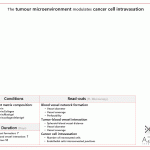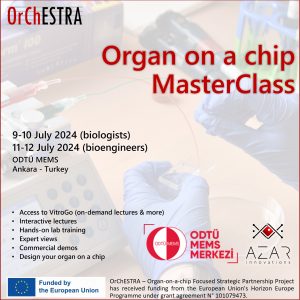Multi-organ model of thyroid-liver axis to study endocrine disruption
A beautiful thyroid-liver axis model of endocrine disruption studying the thyroid-stimulating hormone (TSH)-dependent triiodothyronine (T3) secretion in a dynamic multi-organ chip. This is a joint publication between Bayer and TissUse with a beautiful characterization of the 3D liver and thyroid models.
Results
The authors used different concentrations of TSH to induce thyroid hormone secretion which mimicked normal physiological conditions. TSH increases T3 secretion and changes the morphology of thyroid follicles with cells with rounder and taller nuclei. Moreover, collagen IV was observed around the edges of the thyroid follicles only in the presence of TSH in the medium. The 3D liver spheroids regulate catabolism of thyroid hormone, and when co-cultured with thyroid, albumin and thyroxin-biding globulin were increased, indicating the model’s ability to balance the thyroid hormone homeostasis.

Method
The authors used patient derived follicles embedded in Matrigel. For the liver organoids, they cultured HepaRG and HSteC cell lines in ULA multi well plates. Both of these 3D models were added to HUMIMIC chip 2 fabricated at TissUse.
Fabrication method: Commercially available, TissUse
Sterilization method: Ready to use
Cell/organoid incorporation: Matrix-follicle drops were transferred into the inner culture compartment of the Chip2 device, spheroids gels were added to the outer culture compartment of the Chip2 device
Perfusion/refreshing method: An on-chip micro-pump generates a pulsatile flow of the systemic culture medium
On-chip read-outs: End-point microscopy
Off-chip read-outs: Off-chip imaging, Real time-qPCR, LC-MS, ELISA
Strong points:
+ Full static characterization of the 3D models
+ Obtaining thyroid organoids from multiple patients
+ Reproducible and robust chip experiments
+ Relatively easy sampling in the chip
Nothing is perfect! The system can also improve:
-Limited data on the interaction of the liver and thyroid models
-No computational analysis on the liver-thyroid tissue volume ratio and compare it to in vivo
Conclusion and outlook
The microphysiological system of this study enables the crosstalk between 3D thyroid follicles and 3D liver spheroids. This microfluidics thyroid-liver model has increased human biological relevance, and a high potential to optimize drug discovery.
Contact us if you want to know more about this system or similar technologies.
Link to paper www.altex.org/index.php/altex/article/view/2349/version/2411
Kühnlenz, J., Karwelat, D., Steger-Hartmann, T., Raschke, M., Bauer, S., Vural, Özlem, Marx, U., Tinwell, H. and Bars, R. (2022) “A microfluidic thyroid-liver platform to assess chemical safety in humans”, ALTEX – Alternatives to animal experimentation. doi: 10.14573/altex.2108261.
This article is reproduced under https://creativecommons.org/licenses/by/4.0/
The images in this post were modified for better clarity. Some of the images were borrowed from Lin, N., Zhou, X., Geng, X. et al. Repeated dose multi-drug testing using a microfluidic chip-based coculture of human liver and kidney proximal tubules equivalents. Sci Rep 10, 8879 (2020). https://doi.org/10.1038/s41598-020-65817-0. The data were processed by AZAR Innovations










